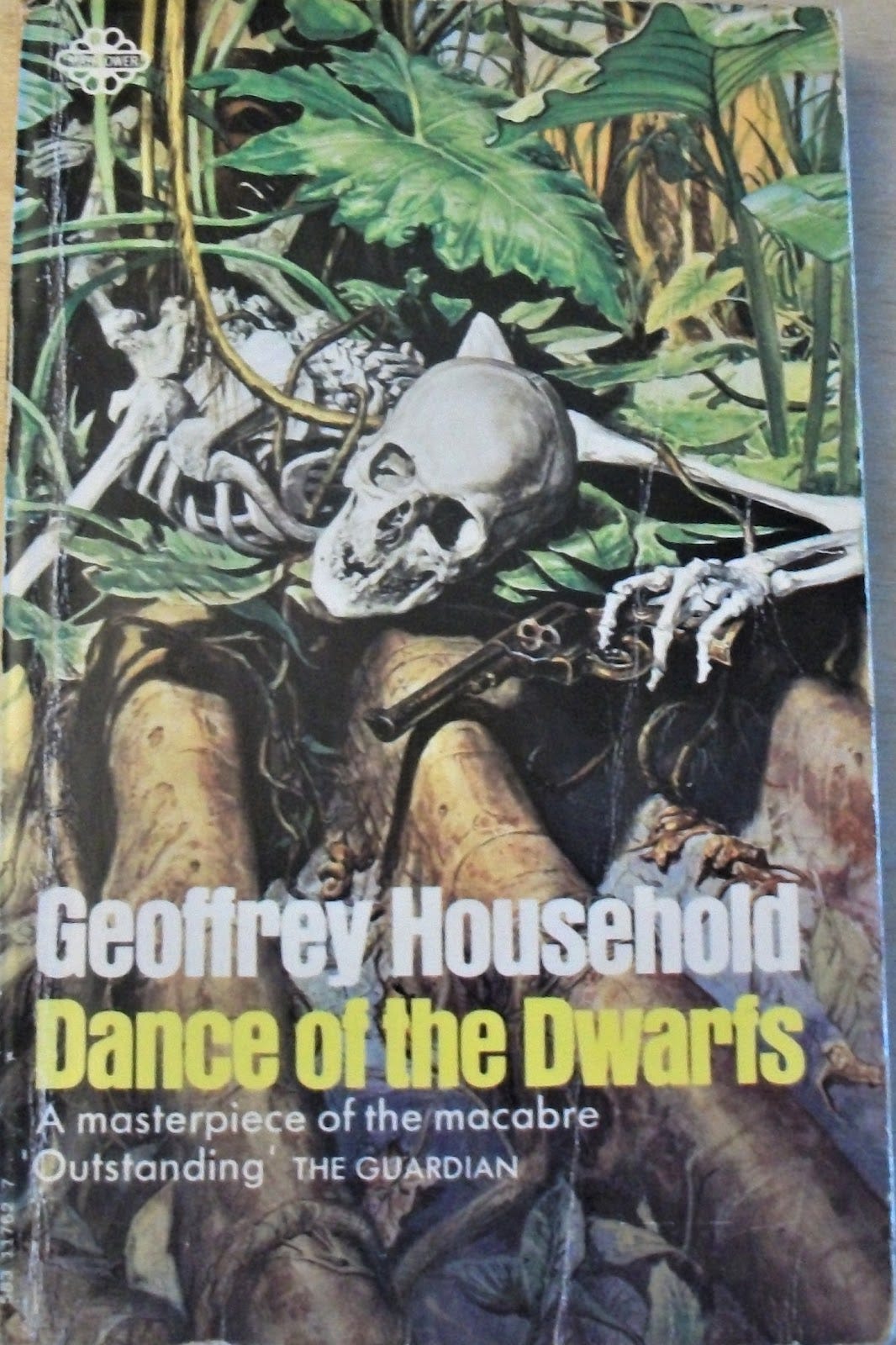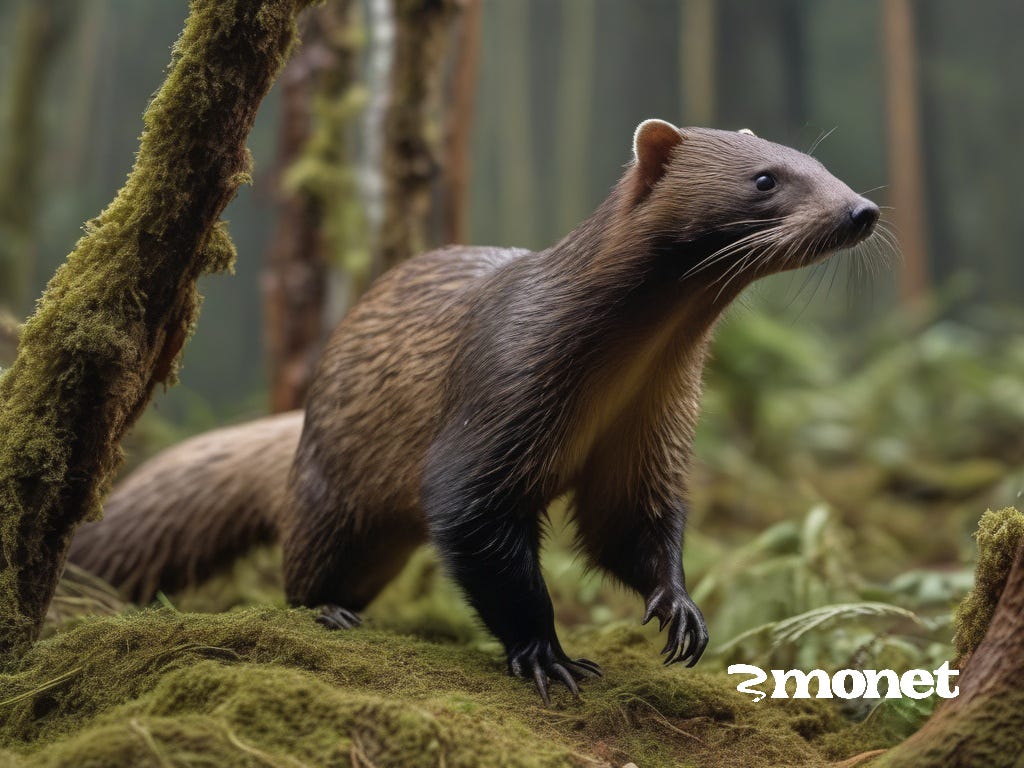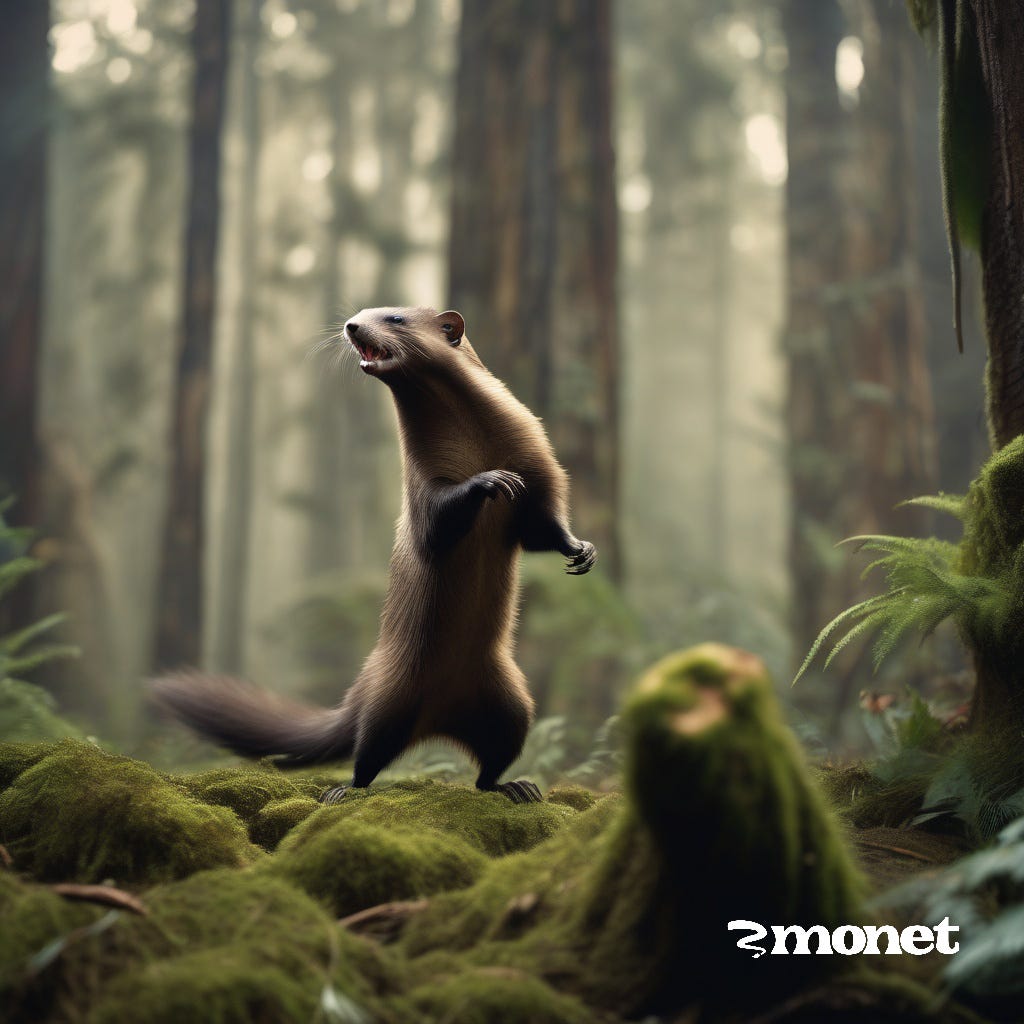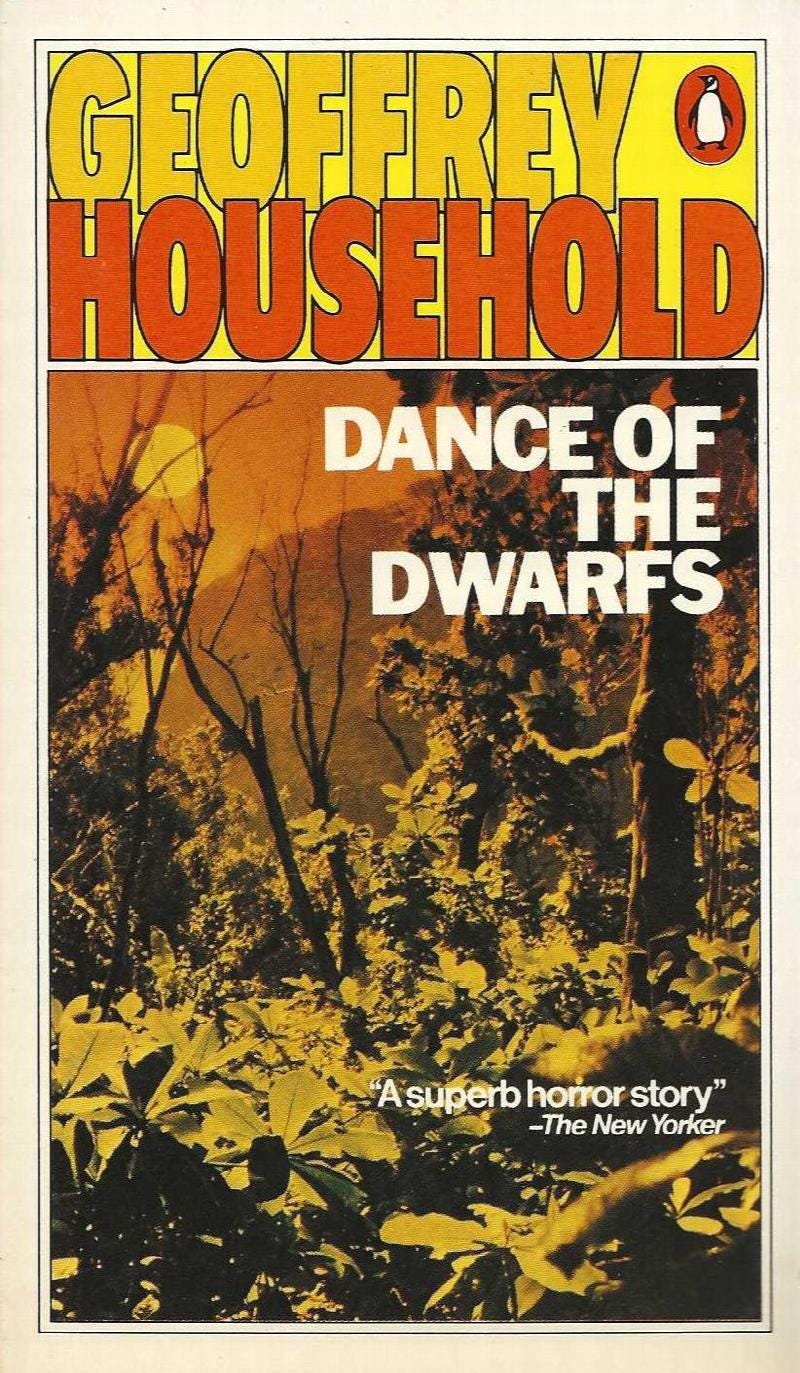Readers unfamiliar with Dance of the Dwarfs may prefer to read these notes only after reading the novel.
In her introduction to the NYRB edition of Rogue Male, Victoria Nelson refers to Dance of the Dwarfs as Geoffrey Household's "late masterpiece."
I agree.
It is also what today we might term a "cryptid horror novel."
Our narrator, agronomist Owen Dawnay, is the one-man operator of a research station in a remote zone of South America:
....the immense plains of Colombia and Venezuela and the tropical forest which forms their southern boundary must be the last expanse of world to be left as it was. In the llanos there is nothing unknown or unexplored; they are merely empty and their life has hardly changed in four hundred years. The forest, too, is known in the sense that all navigable rivers are navigated and that here and there some prospector, rubber collector or deliberate explorer has crossed by land from one river to another; but what he could see on low ground was limited to a hundred yards on either side, and on high ground to the world of the treetops. One assumes that the fauna, the flora and the floor of leaf mold are always the same. It is, I think, a very large assumption. I have plenty of evidence pointing to rapid differentiation of species. But that is for my journal, not this diary.
A rare twelve-year drought is commencing. Creeks quickly dry up, eliminating the natural border between llano [grassland] and deeper timber forest.
Dawnay, his household staff, inamorata, and the nearby villagers soon note evidence of the fabled duende. These "dancing dwarfs" can run on two or four legs, are nearly perfect at camouflage, and leave enigmatic kills behind for tropical flora to cover-over.
Only in the last extreme of thickening necessity does Dawnay venture on horseback into the tall timber. He has tentatively identified the duende as a type of mustelid, and is eager for further confirmation. After dismounting, his horse Tesoro is spooked by the cry of a dwarf and bolts headlong into the trees.
I climbed a tree in the hope of seeing him, but found that I had a longer view on the ground. When I came down again I heard the drum of his hooves approaching and ran towards him, trying to keep my voice calm as well as loud. He passed across my front a hundred yards away, curving towards the gloom, the gold of his coat darkened by sweat and streaked with foam, the gun in its holster bouncing against his flank. He did not turn, never heard or saw me probably. He was near the end of his endurance. The mustelid appeared on his trail two or three minutes later, unhurried, still loping effortlessly along.
I never expected to see Tesoro again, but I underrated the utter cruelty, the hypnosis of the Declaration of Intent. He passed out of sight and hearing but it was not long before again I glimpsed what was left of his gold dodging through the black trunks. He was going at a slow canter now. Once he pecked and was down on his knees, then off again using the last of his breath for a despairing neigh. This second circle in which he ran was so much smaller than the first that I raced frantically across the diagonal in the hope of intercepting him. It could not be done. I only got near enough to be in at the death.
The mustelid bounded into sight ten lengths behind him, never quickening pace, trusting to the exhaustion and terror of the prey. The final attack was a short spurt and a tremendous leap which landed it on Tesoro’s back. It bit him straight through the axis, twisting its head to bring the fangs to bear on each side of the spine, and Tesoro went down head over heels, the mustelid jumping clear and then slinking to the throat which it tore open.
Its eyes were just above the level of Tesoro’s prostrate neck and closed in ecstasy as it lapped. When it opened them it saw me. There was no handy tree, and even if there had been I do not think I would have turned my back when two long springs could reach me. It crouched down with forepaws on Tesoro. Face and whiskers were dabbled with blood which dripped from the points of the white, bared canines.
I was not prey. I was a creature, like the jaguar, which had dared to interfere with a meal. I expected a fierce but harmless demonstration warning me to clear off or to be killed; but there was none. It meant business from the start, crawling towards me with belly nearly touching the ground. It looked more like some kind of thick, furry snake than a mammal.
I could only stand my ground and hope that the shining machete would be taken as my own demonstration — a better proof than growls and open mouth that I too meant business. I remember thinking that I was the heavier of the two beasts and that cold steel was better than teeth. I felt anger rather than fear. Adrenalin and high blood pressure, I suppose. My life force was aware that fear could not save it.
There must have been some transference, for the mustelid hesitated. It probably did not care for a frontal attack, which was unfamiliar; its prey always turned tail. Hesitation was very short. Like all its kin, even those which are not aggressive, its courage was without limits. The challenger might be behaving in a manner outside its experience, but the end would be that which always happened.
A full spring must have had me down, but it came on with leisurely crawl till it was not more than two yards from me. When it exposed its throat and before it could get fairly launched I lunged forward. The point of the machete, too wide for an effective stab, got caught in the loose, tough skin, pushing a thick fold of it sideways. The force with which we met was enough to roll both of us over. Any feline could then have finished me with a stroke of the paw, but the mustelid had to get its jaws to bear. As it turned head and shoulders I struck out backhanded with the machete and slammed it full on the nose. To my amazement it toppled over as suddenly as Tesoro. I ran to the saddle holster, recovered the gun and blew the back of its head in just as it was getting up from the count....
* * *
The fate of Dawnay and his beloved, Chucha, has already been revealed in the novel's preface:
We found no weapon by the bodies. It is to be supposed that he rushed to the door to confirm that his anxiety was needless, and saw what was behind her. There was no time to go back for steel or gun, so he went on bare-handed; and whether she was alive or dead when he took her in his arms we do not know....
This entwined embrace in death immediately recalled the end of Household's 1982 novel Rogue Justice. At the end of that novel, Raymond Ingelram is recuperating from fever in a convent in the Belgian Congo. As he recuperates, he helps with gardening and tending animals. Ultimately, he must take up spear and shield against a big cat that has killed a cow in a livestock enclosure:
....when the bodies [of Ingleram and the cat] were discovered the spear was through the heart of the lioness and her teeth had closed on his head. Though the nuns put it more delicately, the two were entwined like a pair of lovers. His arms were round her and one of the hind legs was thrown over his. I make no comment. Did he in the moment of death dream that he embraced his love? Or did he approach some transcendental reality when he wrote ‘she had loved, therefore she is’?
Jay
29 June 2024






